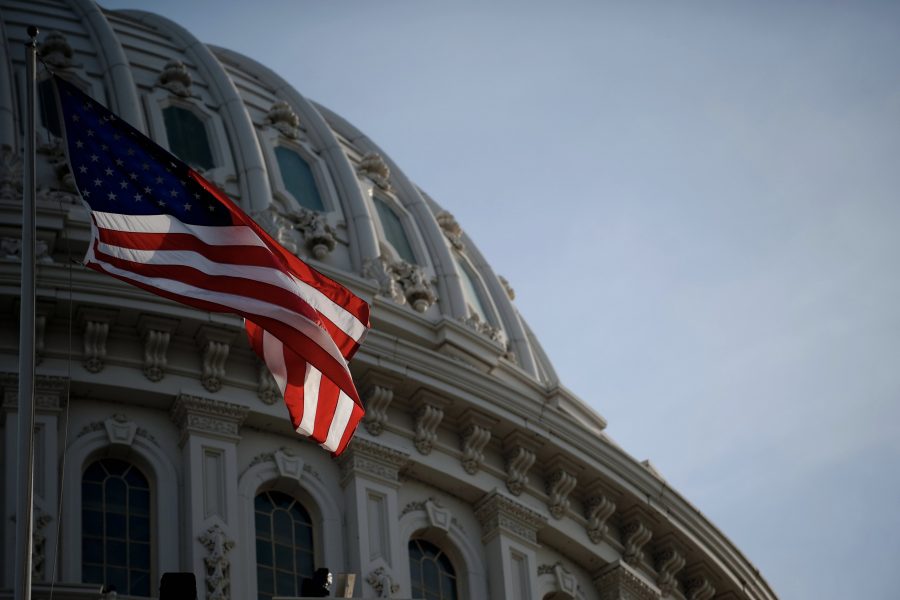The Senate Armed Services Committee’s defense spending plan for 2021 would give the Air Force and Space Force largely what they want, with some notable tweaks.
“What this bipartisan bill does is straightforward: care for our troops; preserve peace through strength; and defend this great nation,” Chairman Sen. Jim Inhofe (R-Okla.) said. “Congress has passed [a National Defense Authorization Act] every year for the last 59 years in a row—always on a bipartisan basis. Now, I look forward to working with my colleagues to make it an even 60 years.”
Under the SASC blueprint, released in full on June 23, Air Force operations and maintenance would cost $34.2 billion next year. While about $53 million less than the service wanted, senators note that the coronavirus pandemic will cause Airmen to spend about $165 million less on regular missions, training, and more. Lawmakers are also cutting the recruitment budget by $20 million because of shrinking opportunities for outreach.
Still, senators added more than $120 million back to the ops budget so the Air Force can keep the A-10, KC-10, and KC-135 in its inventory, as well as to bolster cyber offense and defense.
The Space Force would receive its full request of $77.1 million for its first full year of operations since becoming a separate service within the Department of the Air Force.
For aircraft procurement, SASC is offering $19.1 billion, or $1.2 billion more than the Air Force requested. That increase largely covers 12 additional F-35As and spare parts, a $50 million increase for the MQ-9 program the Air Force wants to end, more F-16 radars, and ejection seats for the T-38 trainer jet.
For missile procurement, the committee authorized the full $2.4 billion request. Lawmakers want to shift $75 million away from Joint Air-to-Surface Standoff Missiles to pay for Long-Range Anti-Ship Missiles instead. LRASM better supports the Pentagon’s deterrence goals in the Indo-Pacific, according to the committee, as China grows its navy.
SASC also met the Air Force’s request for ammunition at $596 million and slightly exceeded its ask for various support equipment like communications systems and utility vehicles at $23.7 billion.
Similarly, the panel gave the Air Force everything it wanted under the Overseas Contingency Operations account used for counterterrorism and other foreign operations. The service’s OCO request totals nearly $2 billion for 2021.
Senators endorsed the Space Force’s first procurement budget, offering $2.5 billion. That’s about $12 million more than requested and covers refurbishment of the Cobra Dane ballistic missile radar.
The Air Force and Space Force’s research and development accounts largely won out as well. The Air Force would receive $37.8 billion under the SASC plan, slightly more than requested, while the Space Force would get slightly less than it wanted at $10.3 billion.
SASC appears pleased with the Air Force’s research endeavors, offering seed money to early-stage initiatives like high-speed materials development and more mature programs to improve the B-52, C-130, and KC-135. But lawmakers also took $50 million in prototyping funds away from the Golden Horde program, saying it is too far along in its attempt to create a network of weapons that work together to go after targets.
Other notable programs that received additional aid include the Hypersonic Air-Breathing Weapon Concept, a hypersonic cruise missile that could get an extra $65 million; the Low-Cost Attritable Aircraft Technology program, which looks to build drones as wingmen or for swarming and may receive an extra $128 million; and a program to put military communications satellites over the Earth’s poles that could see an additional $46 million.
A classified air-to-air weapon would get a $62 million boost as well.
Funding for the GPS III constellation’s Operational Control Segment was siphoned to higher-priority space missions, after running into bumps along the way in development. The committee added $30 million to get a head start on a future phase of national security space launch technologies.
The full, Republican-led Senate is likely to approve the committee’s version of the fiscal 2021 defense policy bill in the coming weeks. Lawmakers will then hash out a compromise with the Democratic-led House’s version, which the House Armed Services Committee has not yet passed. Their bills allow the Pentagon to spend money, while congressional appropriators must still write legislation that green-lights the final amount.
“While I do not support every provision in this bill, it makes important investments in readiness, modernization, and force protection and includes several needed reforms,” Ranking Member Sen. Jack Reed (D-R.I.) said. “I hope we can improve the bill on the floor. Congress must work on a bipartisan basis to ensure our forces have the right tools and capabilities to combat threats around the globe.”
The House Armed Services Committee is expected to pass its version of the defense policy bill next week.


